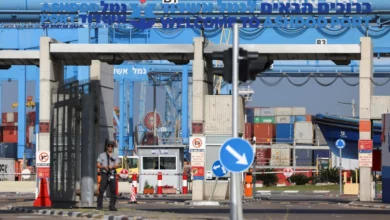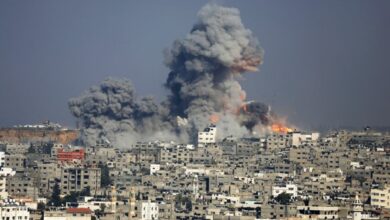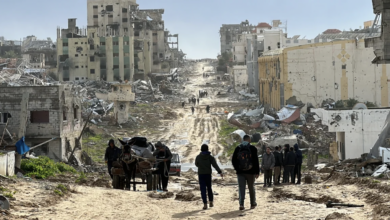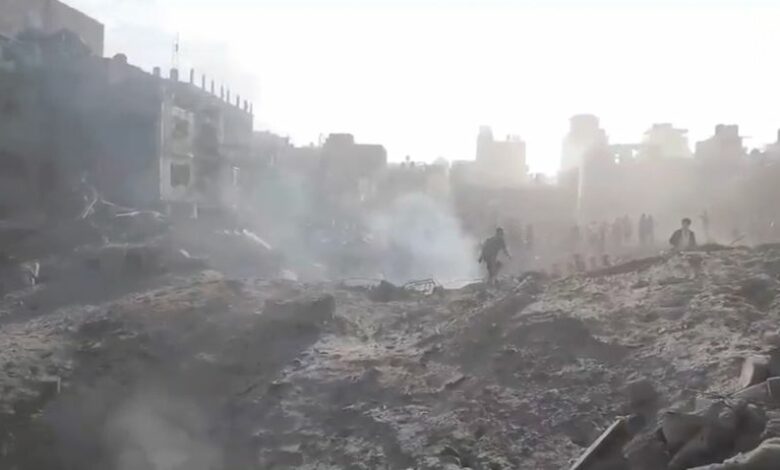
In the first month of its war in Gaza, Israel dropped hundreds of massive bombs, many of them capable of killing or wounding people more than 1,000 feet away, analysis by CNN and artificial intelligence company Synthetaic suggests.
Satellite imagery from those early days of the war reveals more than 500 impact craters over 12 meters (40 feet) in diameter, consistent with those left behind by 2,000-pound bombs. Those are four times heavier than the largest bombs the United States dropped on ISIS in Mosul, Iraq, during the war against the extremist group there.
Weapons and warfare experts blame the extensive use of heavy munitions such as the 2,000-pound bomb for the soaring death toll. The population of Gaza is packed together much more tightly than almost anywhere else on earth, so the use of such heavy munitions has a profound effect.
“The use of 2,000-pound bombs in an area as densely populated as Gaza means it will take decades for communities to recover,” said John Chappell, advocacy and legal fellow at CIVIC, a DC-based group focused on minimizing civilian harm in conflict.
Israel has come under pressure internationally over the scale of the devastation in Gaza, with even staunch ally US President Joe Biden accusing Israel of “indiscriminate bombing” of the coastal strip.
Israeli officials have argued that its heavy munitions are necessary to eliminating Hamas, whose fighters killed more than 1,200 people and took more than 240 hostages on October 7. They also claim that Israel is doing all it can to minimize civilian casualties.
“In response to Hamas’ barbaric attacks, the IDF is operating to dismantle Hamas’ military and administrative capabilities,” the Israel Defense Forces (IDF) said in a statement in response to CNN’s reporting. “In stark contrast to Hamas’ intentional attacks on Israeli men, women and children, the IDF follows international law and takes feasible precautions to mitigate civilian harm.”
Hamas relies on a sprawling tunnel network that is believed to crisscross the Gaza Strip. Proponents of Israel’s campaign in Gaza argue that the heavy munitions act as bunker busters, helping to destroy Hamas’ underground infrastructure.
But 2,000-pound bombs are normally used sparingly by Western militaries, experts say, because of their potential impact on densely populated areas like Gaza. International humanitarian law prohibits indiscriminate bombing.
Marc Garlasco a former US defense intelligence analyst and former UN war crimes investigator, said the density of Israel’s first month of bombardment in Gaza had “not been seen since Vietnam.”
Garlasco, now a military adviser at PAX, a Dutch non-governmental organization that advocates for peace, reviewed all the incidents analyzed in this report for CNN.
“You’d have to go back to the Vietnam war to make a comparison,” said Garlasco. “Even in both Iraq wars it was never that dense.”
The heavy munitions, mostly manufactured by the US, can cause high casualty events and can have a lethal fragmentation radius – an area of exposure to injury or death around the target – of up to 365 meters (about 1,198 feet), or the equivalent of 58 soccer fields in area.
Weapons and warfare experts blame the extensive use of heavy weaponry, such as the 2,000-pound bomb for the soaring death toll. According to authorities in the Hamas-controlled Gaza Strip, about 20,000 people have been killed since October 7.
Most of the dead are women and children, according to those figures.
CNN partnered with US AI company Synthetaic which used Rapid Automatic Image Categorization (RAIC) to detect craters, smoke plumes and damaged buildings in tasked satellite imagery over the Gaza Strip. The findings were manually reviewed by a member of Synthetaic, as well as by CNN journalists.
CNN and Synthetaic’s findings “reveal and emphasize the sheer intensity of the bombardment over a very short period of time,” according to Annie Shiel, US advocacy director at CIVIC.
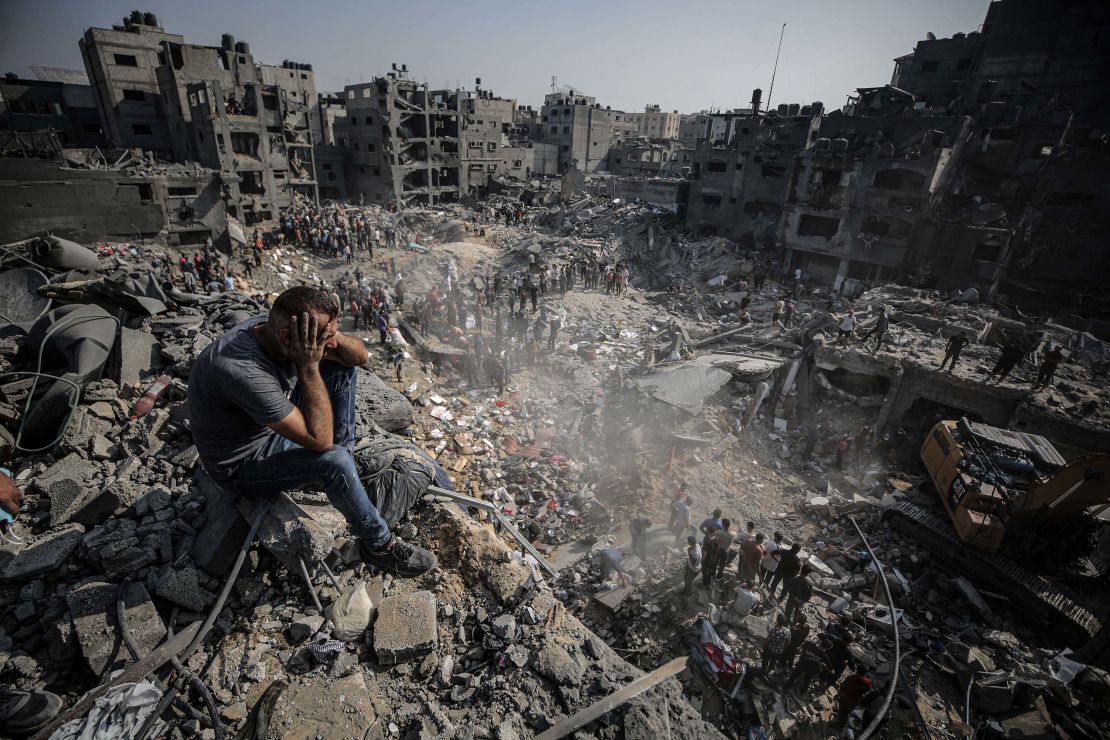
A high-intensity offensive
For over two months, Israel has conducted a high-intensity war in Gaza, combining heavy aerial bombardment with relentless rounds of artillery fire, as well as a ground invasion that began on October 27.
The operation has wrought devastation that stretches across swathes of the besieged enclave, satellite imagery and video show.
“In two months, we’ve had about the level of strikes in this tiny little area in Gaza as what we saw in Mosul and Raqqa combined,” said Larry Lewis, research director at the Center for Naval Analyses (CNA) and formerly the US State Department’s senior adviser on civilian harm, referring to US-led coalition operations against two ISIS strongholds. “It is an incredible amount of strikes, period-wise.”
The US dropped a 2,000-pound bomb only once during its fight against ISIS – the most recent Western war on a militant group in the Middle East. It fell on the so-called caliphate’s self-declared capital of Raqqa in Syria.
On November 6 – the final day of CNN and Synthetaic’s dataset – the death toll in Gaza surpassed 10,000 people, according to the Palestinian health ministry in Ramallah, citing authorities in Hamas-controlled Gaza.
Later that week, Assistant Secretary of State for Near Eastern Affairs Barbara Leaf – the most senior American diplomat on the Middle East – said the death toll could be “even higher.”
“In this period of conflict and the conditions of war, it is very difficult for any of us to assess what the rate of casualties are,” said Leaf during a hearing before the House Foreign Affairs Committee. “We think they’re very high, frankly. It could be even higher than are being cited.”
Last week, US intelligence sources told CNN that 40-45% of the 29,000 air-to-surface munitions dropped on Gaza by then were so-called dumb bombs, unguided munitions that can pose a greater threat to civilians, especially in densely populated territories like Gaza.
Some of these are likely to be the 2,000-pound bombs detected in the satellite imaging of the craters. Israel has a large arsenal of the big bombs, known as MK-84s. When a GPS-guided kit is attached to the MK-84, the bomb becomes known as a GBU-31.
According to two people familiar with the matter, the US has provided Israel with more than 5,400 MK-84s since October 7.
“The devastation that we’ve seen for communities in Gaza is unfortunately, co-signed by the United States,” said CIVIC’s Chappell. “Too much of it is carried out by bombs that were made in the United States.”
Extensive big bomb attacks around Gaza City
The 2,000-pound bombs feature prominently in attacks on the perimeter of Gaza City, the epicenter of the Israeli military operation in October and much of November.
Israel’s ground forces eventually laid siege to the city in early November. The bombing pattern seen in the satellite images suggests that the heavy bombardment around Gaza City may have paved a path to its encirclement by Israeli troops.
In northern Gaza’s Jabalya refugee camp, satellite images showed two large craters consistent with Israel’s October 31 bombing, decried by the UN as a “disproportionate attack that could amount to war crimes.” It claimed over 100 lives, according to civilian harm watchdog Airwars, and caused catastrophic damage in the densely populated area.
One Al Jazeera employee lost 19 members of his family in the bombing, which Israel claimed targeted Hamas commander Ibrahim Biari, killing him and destroying his base.
The two craters left behind by the attack, which experts described as “earthquake-like” in its impact, were 24 meters (nearly 79 feet) wide and 13 meters (nearly 43 feet) wide respectively, according to satellite imagery.
Former State Department adviser Lewis said the October 31 Jabalya strike was “something we would never see the US doing.”
“It certainly appears that (Israel’s) tolerance for civilian harm compared to expected operational benefits is significantly different than what we would accept as the US,” Lewis said.
A large crater consistent with a 2,000-pound bomb is seen on the coastal highway that runs through the Al Shati’, or Beach camp. In a neighborhood just north of the camp, 14 craters indicating 2,000-pound bombs appear in one square kilometer.
The Beach camp is one of the first areas in Gaza where Israeli ground troops established a firm foothold. Satellite images of the refugee camp from November 6 showed it to have been all but leveled by bombardment.
“Suddenly, we heard two airstrikes. It was loud. It felt like an earthquake. We saw stones flying everywhere,” said one man to a CNN stringer in the immediate aftermath of an apparent large bomb attack on the Beach camp on November 6. “We came here to see 10 houses struck.”
The lethal fragmentation zone
The 2,000-pound bomb’s large 365-meter (about 1,198-ft) lethal fragmentation radius is evident in many videos reviewed by CNN, where several buildings are seen to have been flattened in a single strike.
On October 24, Israel struck a location less than 100 meters (about 328 ft) away from Wafa Hospital. In an interview with al-Jazeera almost immediately after the strike, the hospital’s director, Fouad Najm, said the attack had “terrified the patients and medics.” The hospital has since gone out of service because of sustained nearby strikes and fuel outages.
It is unclear whether the October 24 blast caused significant damage to the hospital.
CNN geolocated video of the blast and matched it to 12-meter and 15-meter craters, consistent with 2,000-pound bombs, in satellite imagery.
“Clearly the hospital is within the lethal fragmentation range of a 2,000-pound bomb. It would likely have caused damage,” said PAX’s Garlasco.
In one area near Beach camp, seven schools were within the lethal fragmentation zone of at least five craters. Satellite imagery captured on November 6 showed wide-scale destruction in the area. Those satellite images also showed Israeli armored vehicles in and around the schools.
“When you use a weapon so close to a civilian building, it is impossible to remove the chance of damage from the weapon. It is going to get hit by something,” said Garlasco.
On the sixth day of its offensive, the Israeli Air Force said in a tweet that it had dropped 6,000 munitions since the start of the war, averaging 1,000 bombs a day. On December 10, Israel’s military said that it had attacked more than 22,000 targets in Gaza.
How we did it
Analysis for this investigation was made possible by RAIC, a detection platform for image, video, and geospatial data. Developed by Synthetaic, RAIC uses an unsupervised AI to instantly search unlabeled data without models. In collaboration with CNN, Synthetaic used RAIC to detect craters, smoke plumes and damaged buildings in tasked satellite imagery over the Gaza Strip. A member of the Synthetaic’s team and two CNN open-source intelligence journalists reviewed the findings.
CNN’s Kareem Khadder, Abeer Salman and Natasha Bertrand contributed to this report.

